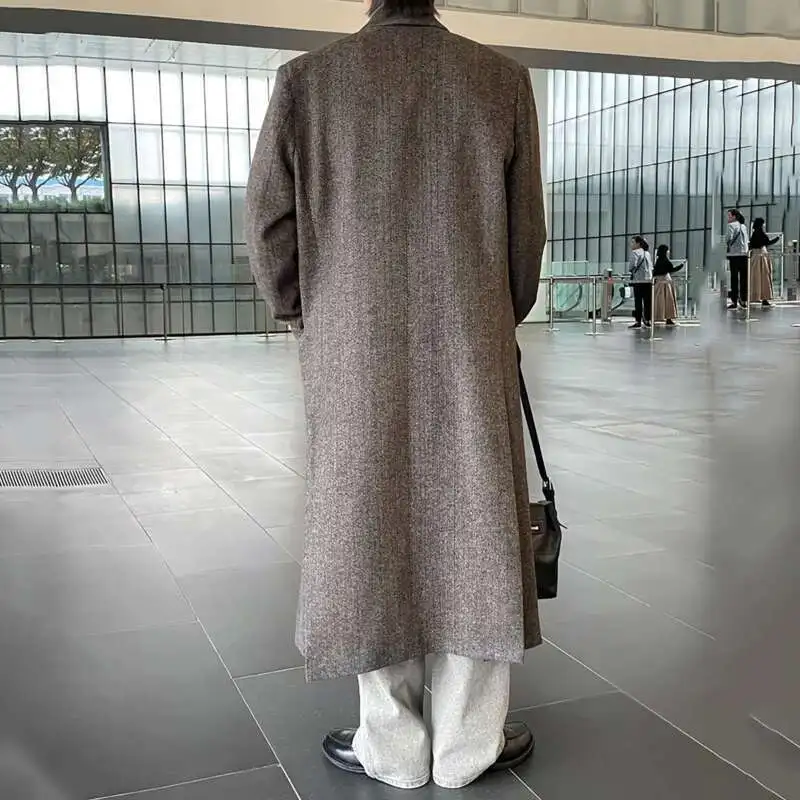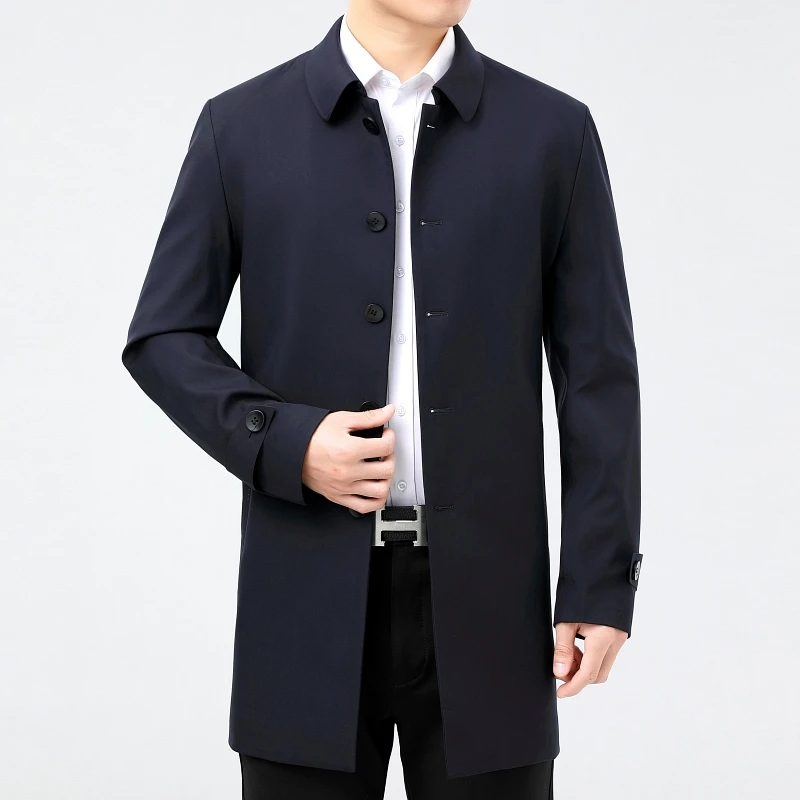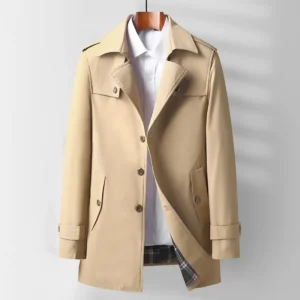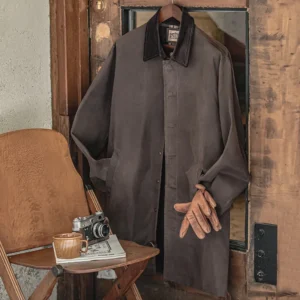Understanding the Essence of Cashmere
Cashmere represents the pinnacle of luxury fabric, harvested from the soft undercoat of cashmere goats that thrive in the harsh climates of regions like Mongolia, China, and the Kashmir region. What makes this material truly exceptional is the remarkable fineness of its fibers, measuring just 14-19 microns in diameter—considerably thinner than human hair, which typically ranges from 50-70 microns. This extraordinary fineness is what gives cashmere its legendary softness and lightweight warmth.
The exclusivity of cashmere stems from its limited availability. Each cashmere goat produces a mere 150-200 grams of usable fiber annually, collected during the spring molting season when the animals naturally shed their winter undercoat. This painstaking harvesting process involves carefully combing the goats to collect the precious down without harming the animals.
What sets premium cashmere apart:
– Exceptionally long fibers, which create stronger and softer fabric
– Meticulous sorting and processing that preserves fiber integrity
– Limited global production that maintains its exclusivity
– Centuries-old traditions of harvesting that respect both animal welfare and quality
The rarity of genuine cashmere explains its higher price point compared to regular wool, but also underlies many of its superior qualities. Understanding the origins and unique properties of this extraordinary fiber helps explain why choosing the perfect cashmere overcoat requires careful consideration and why distinguishing between cashmere blend vs pure cashmere is essential for the discerning buyer.
The Core Benefits of a Cashmere Overcoat: Unmatched Comfort and Functionality
Exceptional Warmth-to-Weight Ratio
The most remarkable quality of cashmere lies in its extraordinary warmth despite its lightweight nature. This seemingly magical property stems from the fiber’s unique microstructure. Cashmere fibers have a hollow core that traps air, creating a natural insulation system that retains body heat while allowing excess warmth to escape—nature’s own temperature regulation system.
Scientific testing has consistently shown that cashmere provides 3-8 times more insulation than regular wool of equal weight. This means a cashmere overcoat can keep you comfortable in freezing temperatures while weighing significantly less than alternatives made from other materials.
This exceptional warmth-to-weight ratio translates to practical, everyday benefits. A cashmere overcoat provides substantial protection against winter’s chill without the bulk and heaviness associated with traditional winter outerwear. You’ll stay warm while maintaining freedom of movement and a sleek silhouette. The question of whether an 100 percent cashmere coat is warm is answered definitively by the science—it offers superior thermal protection despite its deceptively lightweight feel.
Luxurious Softness and Skin-Friendly Comfort
The tactile experience of wearing cashmere stands apart from all other natural fibers. Its extraordinary softness against the skin creates an immediate sense of luxury and comfort. This softness isn’t just pleasant—it’s functional, especially for those with sensitive skin who find traditional wool irritating.
The comfort difference comes down to fiber structure. While regular wool fibers have scales with rough edges that can cause itching and irritation, cashmere fibers feature smoother scales and significantly less lanolin (the natural wax found in wool). This structural difference explains why cashmere feels so much gentler against the skin.
Many wearers with wool sensitivities report being able to wear cashmere comfortably, making it an excellent alternative for those who need warmth without irritation. The sensory pleasure of slipping into a cashmere overcoat—that instant feeling of being enveloped in softness—becomes a daily luxury that transforms the simple act of putting on a coat into something special. Mastering cashmere overcoat fit and comfort ensures you’ll experience this luxurious sensation every time you wear your garment.
Elegant Drape and Sophisticated Silhouette
The way a garment hangs on the body—its drape—significantly impacts its overall appearance. Cashmere possesses a natural fluidity that creates an elegant, refined silhouette unlike any other material. The lightweight fibers allow the fabric to flow with the body’s movements rather than standing stiffly away from it.
This superior drape creates a more polished, tailored appearance even in less structured overcoat designs. While other heavy winter materials can create a bulky, shapeless look, cashmere conforms gently to the wearer’s form, maintaining clean lines and a sophisticated profile. The material naturally enhances the coat’s design elements, whether it’s a classic single-breasted style or a more dramatic double-breasted overcoat style.
The elegant drape of cashmere also means these overcoats transition seamlessly between different settings. The same coat that looks commanding in a professional context maintains its refinement when worn casually. This versatility stems directly from the inherent properties of the material itself—it simply looks good in motion and at rest.

Exceptional Durability and Longevity
Despite its reputation for delicacy, high-quality cashmere is remarkably resilient when properly cared for. In fact, cashmere often improves with age, becoming softer with each careful wearing and cleaning. The long, fine fibers resist pilling better than shorter-fibered wools, maintaining their appearance over years of use.
A well-made cashmere overcoat can easily last 20+ years—or even be passed down as an heirloom piece. This exceptional longevity transforms the purchase from an expense into a genuine investment, dramatically reducing the “cost per wear” over time.
Care guidelines that extend a cashmere overcoat’s lifespan:
– Store properly during off-seasons (clean and in breathable garment bags)
– Address small issues promptly before they become larger problems
– Clean according to manufacturer specifications, typically dry cleaning
– Allow the garment to rest between wearings
When compared to other overcoat materials that might need replacement every few years, cashmere’s longevity becomes one of its most compelling practical advantages.
Timeless Style Beyond Seasonal Trends
Fashion trends come and go, but certain pieces transcend these cycles—cashmere overcoats firmly belong in this category. Throughout the past century, while cuts and styles have evolved slightly, the cashmere overcoat has maintained its position as a symbol of refined taste and understated luxury.
Historical figures from Hollywood’s golden age to political leaders have chosen cashmere overcoats as signature pieces. Their appeal lies in a perfect balance of understatement and luxury—making a statement without being ostentatious. The classic lines and exceptional fabric speak for themselves without relying on passing trends or flashy details.
This timelessness means today’s investment in a quality cashmere overcoat will remain stylish and relevant for decades. Unlike fast fashion pieces that quickly look dated, cashmere overcoats exist outside trend cycles, representing enduring style that appreciates rather than depreciates with time.
Versatility: One Garment for Multiple Occasions
Adaptability Across Dress Codes
The true versatility of a cashmere overcoat emerges in its seamless integration across various dress codes. Few garments transition so effortlessly between different levels of formality.
In professional settings, a cashmere overcoat elevates a business suit, creating a coordinated look of authority and refinement. The same coat transforms a simple sweater and trousers into a smart casual ensemble appropriate for dinner out or cultural events. Even paired with jeans and boots for weekend wear, the cashmere overcoat adds an element of sophistication without seeming overdressed.
This adaptability stems from cashmere’s inherent elegance and the clean lines typical of well-designed overcoats. The material doesn’t compete with other elements of your outfit but enhances them, allowing for countless combinations across your existing wardrobe. Learning how to style a men’s cashmere overcoat unlocks its full potential across all dress codes.
Natural Temperature Regulation
Unlike synthetic materials that can leave you overheated or chilled, cashmere possesses remarkable temperature-regulating properties. The unique fiber structure that provides insulation in cold weather also offers breathability that prevents overheating as temperatures rise.
This natural thermoregulation makes cashmere overcoats ideal for transitional seasons—autumn days that start crisp but warm by afternoon, or spring evenings when temperatures drop unexpectedly. The fibers adapt to your body’s needs, providing comfort across a surprisingly wide temperature range.
Cashmere also features excellent moisture-wicking properties. The fibers can absorb up to 30% of their weight in moisture without feeling damp, keeping you dry and comfortable even as conditions change. This contrasts sharply with synthetic alternatives that often trap moisture against the skin, creating discomfort.

Practical Advantages for Daily Wear
Beyond luxury and style, cashmere offers practical benefits that enhance everyday wearability:
- Wrinkle resistance: Cashmere naturally resists creasing, maintaining a polished appearance throughout the day and making it ideal for travel
- Lightweight packability: Unlike bulky wool overcoats, cashmere folds compactly without damage, fitting easily into luggage or overhead compartments
- Odor resistance: The natural fibers resist bacterial growth that causes odors, requiring less frequent cleaning than synthetic alternatives
- Static resistance: Cashmere generates minimal static electricity compared to synthetic materials, preventing annoying cling and sparks in dry conditions
These practical attributes complement the aesthetic and comfort benefits, making cashmere overcoats as functional as they are luxurious. For those interested in maximizing these benefits across various styles, exploring options for styling men’s long overcoats provides additional versatility.
Mens Cashmere Overcoat, Mens Hooded Winter Coat, Mens Wool Blend Coat
Price range: $128.72 through $139.68 Select options This product has multiple variants. The options may be chosen on the product pageMens Black Overcoat, Mens Black Wool Coat, Mens Wool Overcoat
$339.18 Select options This product has multiple variants. The options may be chosen on the product pageMens Grey Overcoat, Mens Wool Blend Coat, Mens Wool Overcoat
$201.28 Select options This product has multiple variants. The options may be chosen on the product pageMens Herringbone Coat, Mens Long Overcoat, Mens Wool Overcoat
Price range: $197.16 through $203.69 Select options This product has multiple variants. The options may be chosen on the product pageMens Long Overcoat, Mens Topcoats
Price range: $189.40 through $196.88 Select options This product has multiple variants. The options may be chosen on the product pageMens Long Overcoat, Mens Tweed Coat
Price range: $397.49 through $409.96 Select options This product has multiple variants. The options may be chosen on the product page
The Investment Perspective: Understanding Value Beyond Price
Cost Analysis: Quality and Production Factors
The higher price of cashmere overcoats directly reflects the labor-intensive production process and material scarcity. Understanding these factors helps contextualize the investment:
Cashmere production involves multiple specialized stages:
– Hand-harvesting of fibers during a brief seasonal window
– Meticulous sorting and grading by skilled workers
– Careful processing to preserve fiber integrity
– Expert weaving and finishing techniques
Additionally, genuine high-quality cashmere is categorized by grades based on fiber diameter and length. Grade A cashmere (the finest available) features fibers under 14 microns in diameter and typically costs significantly more than lower grades. However, this premium translates directly to superior softness, durability, and performance.
Manufacturing a single cashmere overcoat requires approximately 4-5 goats’ worth of annual fiber production, further explaining its premium positioning. When considering whether a cashmere overcoat is worth its price, understanding these production realities provides important context.
Long-Term Value: Cost Per Wear Analysis
To truly evaluate the value of a cashmere overcoat, consider the “cost per wear” formula:
Cost per wear = Initial price ÷ Number of times worn
While the initial investment might be substantial, the extended lifespan of quality cashmere dramatically reduces the cost per wear over time:
Example calculation:
– Initial investment: $1,200
– Wearings per season: 40 days
– Seasons of use: 15 years
– Total wearings: 600
– Cost per wear: $2 per use
Compare this to a lower-quality coat priced at $300 that lasts just 3 seasons:
– Initial investment: $300
– Wearings per season: 40 days
– Seasons of use: 3 years
– Total wearings: 120
– Cost per wear: $2.50 per use
This analysis reveals that quality cashmere often proves more economical over time than less expensive alternatives that require frequent replacement. Additionally, well-maintained cashmere overcoats often retain resale value better than other materials, further enhancing their long-term financial proposition.
Comparative Analysis: Cashmere Versus Other Premium Materials
Cashmere vs. Wool: A Detailed Comparison
Understanding how cashmere compares to standard wool helps clarify its premium status:
| Attribute | Cashmere | Regular Wool |
|---|---|---|
| Fiber diameter | 14-19 microns | 20-40 microns |
| Warmth-to-weight | Exceptional (3-8x warmer) | Good |
| Softness | Extremely soft, non-irritating | Varies from soft to scratchy |
| Weight | Very lightweight | Typically heavier |
| Drape | Elegant, fluid | Often stiffer, less flowing |
| Durability | Excellent with proper care | Very good to excellent |
| Maintenance | Requires gentle care | Generally easier to maintain |
| Price point | Premium | Moderate to high |
While both materials offer excellent insulation, cashmere provides superior softness and comfort at a significantly lower weight. Regular wool overcoats tend to be more rugged and often easier to care for, but lack the exceptional tactile qualities and elegant drape of cashmere.
The performance differences become most apparent in specific conditions—cashmere’s superior insulation without bulk makes it ideal for cold weather where mobility and comfort remain priorities.

Cashmere vs. Synthetic Alternatives
While modern technology has created synthetic fabrics designed to mimic natural materials, significant differences remain between cashmere and its synthetic alternatives:
Cashmere provides natural temperature regulation that adapts to body conditions, while synthetics often trap heat and moisture, creating discomfort in changing conditions. The breathability of natural cashmere fibers allows air circulation that synthetic materials rarely match.
From an environmental perspective, high-quality cashmere represents a biodegradable, renewable resource when sourced responsibly. In contrast, many synthetic alternatives derive from petroleum products and may persist in the environment for centuries.
Perhaps most importantly, synthetic materials rarely develop the character and improved hand-feel that cashmere acquires over time. While synthetics often degrade with use—pilling, losing shape, or developing an unpleasant shine—well-maintained cashmere typically improves, becoming softer and developing a subtle patina that enhances its appeal.
Maximizing Your Investment: Essential Care for Cashmere
Proper Cleaning and Maintenance Techniques
Proper care dramatically extends the lifespan of a cashmere overcoat while maintaining its luxurious feel:
Cleaning frequency: Clean only when necessary, typically once or twice per season depending on wear frequency. Over-cleaning can damage fibers.
Professional dry cleaning: Select a cleaner experienced with luxury materials and specify that your garment is cashmere.
Home care between cleanings:
– Brush gently after wearing to remove surface dirt and debris
– Air out the coat after wearing before storing
– Address spots and stains promptly with a damp cloth and mild soapSeasonal storage:
– Clean before storing for extended periods
– Use breathable garment bags, never plastic
– Include cedar blocks or lavender sachets as natural moth deterrents
– Store flat or on a properly shaped hanger to maintain structurePill management: Use a cashmere comb or fabric shaver designed for delicate materials to gently remove pills that develop from friction.
By following these maintenance guidelines, your investment will remain in excellent condition for years. Metro Cloak offers a range of premium men’s cashmere overcoats designed with longevity in mind, alongside other fine outerwear options in the men’s overcoats collection.
Beyond the Myths: Addressing Common Questions About Cashmere Overcoats
Debunking Cashmere Misconceptions
Q: Is cashmere too delicate for everyday wear?
A: While cashmere requires proper care, high-quality cashmere overcoats are designed for regular use. The fiber’s natural strength and resilience make it surprisingly durable when maintained correctly.
Q: Does cashmere require complicated maintenance?
A: Cashmere care is straightforward, not complicated. Simple practices like using a garment brush, proper hanging, and professional cleaning when necessary will maintain your overcoat’s condition.
Q: Is all cashmere production harmful to animals or the environment?
A: Responsible cashmere production involves harmlessly combing shedding goats during natural molting seasons. Many producers now follow sustainable and ethical practices, though it’s worth researching specific brands’ sourcing policies.
Q: Are cashmere blends just as good as pure cashmere?
A: Blends offer different benefits—often increased durability and lower cost—but typically don’t provide the same exceptional softness, lightweight warmth, or luxurious drape as pure cashmere. Understanding mastering the art of layering under cashmere helps maximize comfort regardless of blend type.
How to Identify Quality in a Cashmere Overcoat
When investing in a cashmere overcoat, look for these quality indicators:
Ply and grade: Two-ply cashmere (two twisted yarns) offers better durability than single-ply. Grade A cashmere (under 14 microns) provides superior softness.
Hand-feel test: Quality cashmere feels incredibly soft but not slippery or overly fuzzy, with a subtle, natural luster rather than an artificial sheen.
Resilience check: Gently pinch and release the fabric—quality cashmere springs back quickly with minimal wrinkling.
Construction details:
- Fully lined with natural materials
- Hand-stitched buttonholes and details
- Pattern matching at seams
Substantial, well-finished buttons
Pilling resistance: Rub the fabric gently between your fingers—excessive fiber shedding may indicate lower quality.
A quality cashmere overcoat represents not just a purchase but a long-term relationship with a garment that will serve you well for decades. When chosen wisely and maintained properly, it becomes both a practical cold-weather solution and an enduring symbol of refined taste.







